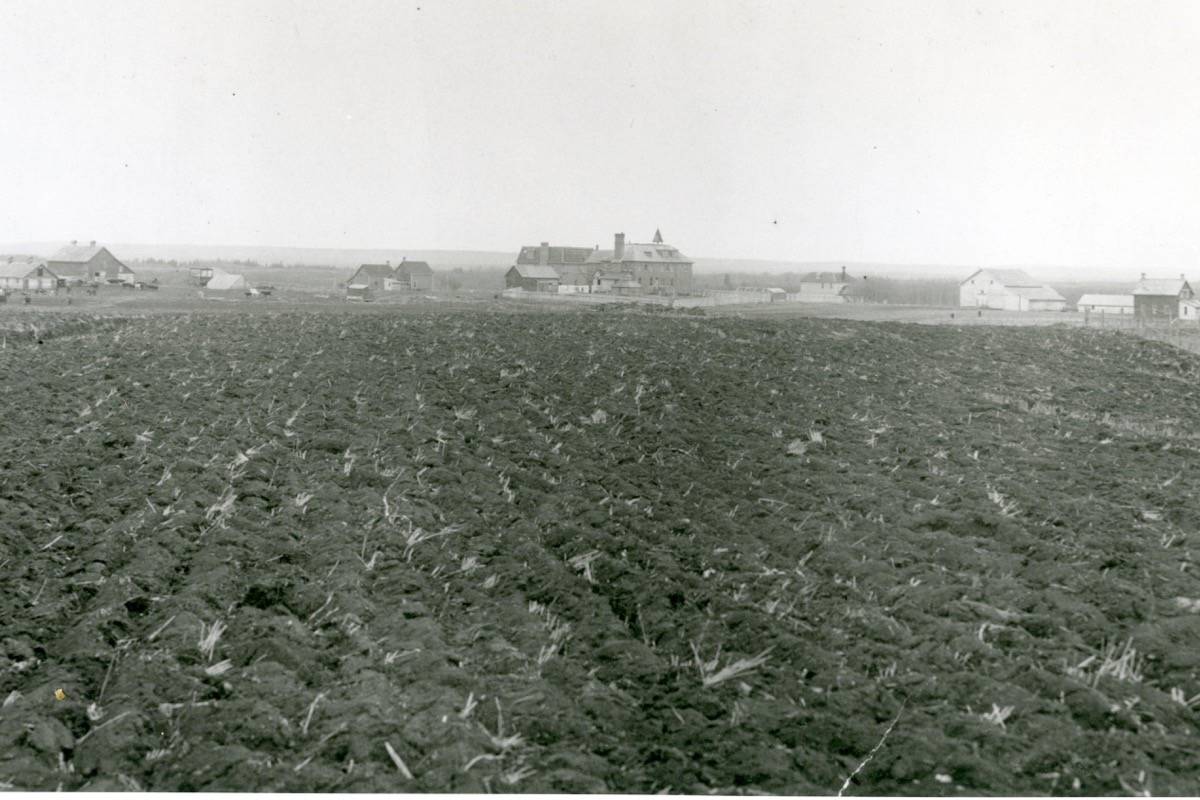On Sept. 28th, 2017, a special memorial was unveiled at the gravesites of Jane Baptiste, David Lightning, Georgina House and Sarah Soosay in the Red Deer Cemetery.
All of these four young people, aged 13 and 14, had been students at the Red Deer Indian Industrial School. They passed away in mid-November 1918 from the great Spanish ‘flu epidemic.
The Spanish ‘flu outbreak started in the fall of 1918 as the First World War was coming to an end.
The disease was brought to North America by veterans returning from the War. The illness seemed to strike teenagers and young adults the hardest. It was not uncommon for ‘flu victims to pass away within two or three days of falling ill.
Sanitation at the Red Deer Indian Industrial School was poor.
Conditions were generally overcrowded. Hence, it is not surprising that virtually all of the students and staff came down with the flu and that four students passed away at the school. Actually, a fifth student, William Cardinal also died from the flu. However, because he was a ‘run-away; he did not pass away in the school dormitories.
The Spanish flu crisis was actually but one of a series of tragedies to strike the Red Deer Indian Industrial School in its 25 years of existence.
The school first opened in 1893 on the north side of the Red Deer River, close to the old Crossing settlement, and a few kilometres upstream from the town of Red Deer.
The site fitted in with the philosophy of the Federal Government at the time. It was in the central part of the province. More importantly, since the idea was to educate native children in European culture and ways of living and to make a break with traditional cultures, sites were sought that were a substantial distance from reserves and close to a ‘white’ urban centre.
The Methodist Church agreed to operate the Red Deer school. It was the first Methodist Indian Industrial School in Western Canada.
Unfortunately, as the school was opened, the Federal Government changed its formula for funding Indian Industrial schools. Instead of the government covering all the operational expenses, as well as the construction costs, a per capita grant system was implemented.
Right from the start, the per capita grants were lower than the costs of running the school. As time went on, the financial shortfalls got worse.
One immediate impact of the new and inadequate funding system was an inability to pay the salaries which were generally offered to teachers.
These lower rates of pay made it difficult to attract qualified staff and also led to high staff turnover. Poor staff morale was a continuous problem.
As previously mentioned, the school’s sanitation system was poor from the start. The drains often plugged. Sewage frequently contaminated the school’s well.
Consequently, there were frequent outbreaks of disease in the school including scarlet fever, meningitis, mumps, measles, and tuberculosis.
There was even a brief outbreak of smallpox. The death rates amongst both students and staff were high. According to the official school register, more than one-third of the students enrolled in the first two years of the school’s operation died prematurely. Dr. P.H. Bryce later wrote that of all the Indian industrial schools he examined, Red Deer had the worst mortality rate.
With the exception of the four students who died from the Spanish flu in November 1918, the students and staff who passed away at the Red Deer institution were buried in a cemetery to the west of the school buildings.
Overcrowding was eased somewhat in 1897 with the construction of a second student residence.
Small cottages were built for staff as well as a number of small instructional and farm buildings.
Nevertheless, conditions at the school remained poor.
The buildings fell into serious disrepair. The school became bankrupt and finally closed in September, 1919, less than a year after the Spanish flu tragedy. The remaining students were either sent home or transferred to other schools.
The new memorial stone in the Red Deer Cemetery is a reminder of the enormous tragedy of the Red Deer Indian Industrial School – the deaths, hardships and great suffering that occurred there.



